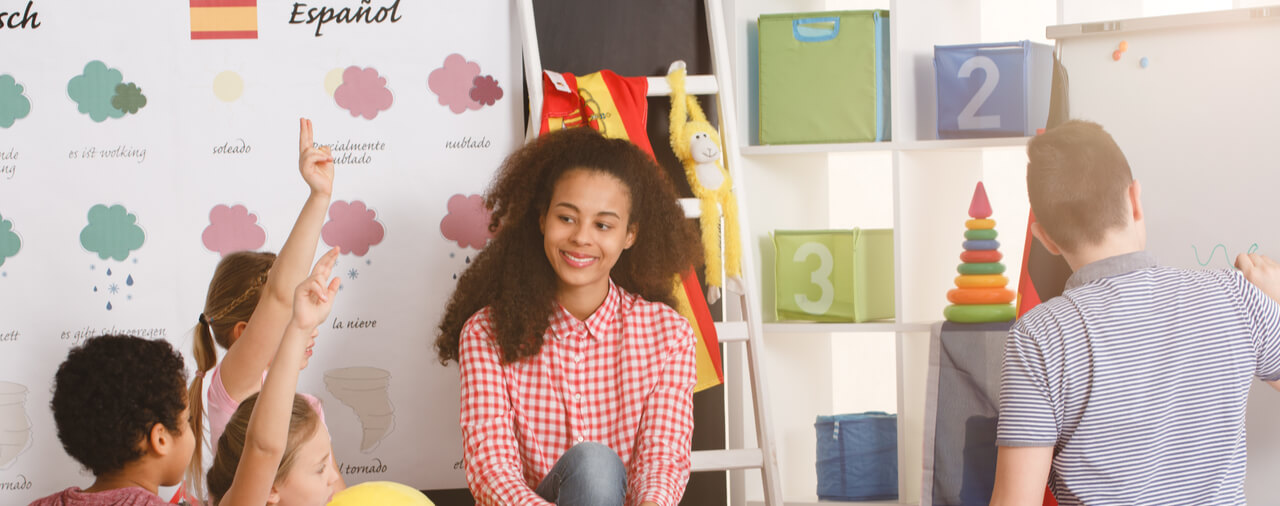- Introduction: Matter of R-C-C-S-D-, Adopted Decision 2016-04 (AAO Oct. 24, 2016)
- Facts and Procedural History
- Relevant Law
- Analysis and Decision
- A. Accessibility to the Public
- B. Cultural Component
- C. Work Component
- Decision
- Conclusion
Introduction: Matter of R-C-C-S-D-, Adopted Decision 2016-04 (AAO Oct. 24, 2016)
On October 24, 2016, the United States Citizenship and Immigration Services (USCIS) issued a Policy Memorandum (PM-602-0138) designating a decision of the Administrative Appeals Office (AAO) as an adopted decision. The guidance in the decision, now titled the Matter of R-C-C-S-D-, Adopted Decision 2016-04 (AAO Oct. 24, 2016) [PDF version], is now binding on all USCIS employees.
The Matter of R-C-C-S-D explains that, under certain circumstances, a language immersion school may be eligible for designation as an international cultural exchange program, allowing it to petition to classify teachers as Q1 international cultural exchange visitors. In order for such an immersion program to qualify as an international cultural exchange program, it must meet the following requirements:
1. Allow for public access;
2. Have a cultural component; and
3. Have a work component connected to the cultural component.
In this article, we will examine the facts and procedural history of the Matter of R-C-C-S-D-, the AAO’s analysis and decision, and the effect that designating this as an adopted decision will have on the Q1 international cultural exchange program going forward. Before reading this article, please see our full article on the Q1 visa for a detailed look at the statutory and regulatory background for the Q1 international cultural exchange program [see article].
Facts and Procedural History
The Petitioner in the case was the second largest public school district in Delaware.
It sought to employ four Beneficiaries, all of whom were Spanish nationals, as elementary school teachers in a language immersion program.
The Petitioner explained that the purpose of the school’s Spanish immersion program was “to provide an opportunity for our American students to learn Spanish language through lessons on Spanish culture, history, literature, cinema, fiesta, dance, and geography that adhere to District curriculum standards and State Common core Standards.”
The school district’s job description for the teachers indicated that the teachers would develop lesson plans and then provide instruction in Spanish and through Spanish literature in, gastronomy, history, and traditions in a variety of subjects.
The Petitioner sought to classify the Beneficiaries as Q1 international cultural exchange visitors under section 101(a)(15)(Q) of the Immigration and Nationality Act (INA). In order to qualify for a Q1 visa, the alien beneficiary must be participate in an international cultural exchange program approved by the Department of Homeland Security (DHS) to provide practical training, employment, and the sharing of history, culture, and the traditions of the country of the beneficiary’s or beneficiaries’ nationality.
The Director of the USCIS’s Vermont Service Center approved the petition and certified her decision to the AAO for review of her determination that the Petitioner’s program was eligible for designation as an international cultural exchange program. This means that the USCIS had approved the petition but then sought review by referring it to the AAO under 8 C.F.R. 103.4.
The Director’s decision found that the record demonstrated that the Petitioner was a qualified international cultural exchange program employer and that the beneficiaries were eligible for Q1 status. The issue for which the Director sought review was whether the Petitioner’s proposed program was eligible for designation as an international cultural exchange program such that it could petition for Q1 beneficiaries.
The issue before the AAO was to determine whether the proposed Spanish immersion program was an international cultural exchange program. For the reasons that we will discuss in the next section, the AAO concurred with the Director’s determination that the proposed Spanish immersion program qualified as an international cultural exchange program.
Relevant Law
The Q1 visa for international cultural exchange visitors is found in section 101(a)(15)(Q) of the INA. Specifically, the statute authorizes Q1 nonimmigrant status “for participants in a DHS-approved international cultural exchange program.” The rules for what constitutes such a program and the requirements for petitioners and beneficiaries are found in regulations in 8 C.F.R. 214.2(q). To learn about these regulations in great detail, please see the relevant section of our full article [see section]. In this article, we will review the regulations pertinent to the issue before the AAO, as discussed in its decision.
The AAO explains that the requirements for qualifying as an international cultural exchange program are found in 8 C.F.R. 214.2(q)(3)(iii). In the following points, we will describe the three criteria that an international cultural exchange program must satisfy under the regulations in 8 C.F.R. 214.2(q)(3)(iii):
A. The international cultural program must be “accessible to the public.” This means that it must take place in a school, museum, business, or other such establishment where the American public, or a segment thereof sharing a common cultural interest, is exposed to aspects of a foreign culture as part of a structured program. The regulation explains that a program that take place in a private home or in an isolated business setting to which such access would not be available does not qualify.
B. The international cultural exchange program must have a “cultural component” that is an essential and integral part of the Q1 exchange visitor’s employment or training. The cultural component “must be designed, on the whole, to exhibit or explain the attitude, customs, history, heritage, philosophy, or traditions of the international cultural exchange visitor’s country of nationality.” The cultural component may include “structured instructional activities such as seminars, courses, lecture series, or language camps.”
C. The final criterion involves the program’s “work component.” The regulation explains that the international cultural exchange visitor’s employment or training may not be independent of the cultural component of the international cultural exchange program. Rather, the program’s work component must “serve as a vehicle to achieve the objectives of the cultural component.” This means, in short, that the employment or training that a Q1 cultural exchange visitor engages in must involve the sharing of the culture of his or her country of nationality, and that such sharing must result from his or her employment or training.
The Board explains that under 8 C.F.R. 214.2(q)(3)(ii), a petition for an international cultural exchange program may be approved for the duration of the program, but not exceeding 15 months plus 30 days to allow time for program participants (Q1 exchange visitors) to make travel arrangements. Under 8 C.F.R. 214.2(q)(7)(iii), an approved Q petition may be valid for whichever period is shorter between the length of the approved program or 15 months.
Analysis and Decision
In the AAO’s analysis, it assessed whether the language immersion program at issue in the instant case met each of the four regulatory requirements that we examined in the previous section. As we will find, the AAO concurred with the Director of the USCIS’s Vermont Service Center that the Spanish immersion program satisfied the requirements for classification as an international cultural exchange program.
A. Accessibility to the Public
The AAO explained that the Director “correctly” determined that the proposed activities of the Spanish immersion program were publicly accessible. To this effect, the AAO noted that the Delaware Immersion Program website indicated that the petitioner was one of several Delaware public school districts that offered a Spanish-language/culture immersion program, and that these programs were open to students across the state. The website also stated that the goal of the program was to immerse students in the Spanish language and in Spanish traditions.
The AAO then assessed the beneficiary’s proposed employment. It noted that the record indicated that the Beneficiaries would not be coming to the United States solely to teach Spanish language classes. Instead the Beneficiaries would engage in “continuous culture sharing” that would “take place in a structure manner” in the Spanish Dual Immersion Magnet Program and its associated Q1 program. Furthermore, the record indicated that “a substantial portion of the participating populations inside and outside [the school district]” would have “direct access.” The Beneficiaries would assist students to prepare cultural demonstrations for assemblies and events that would be open to the students’ families and the community. Finally, the record indicated that the Beneficiaries would offer cultural lessons to students in other schools within the school district.
Finally, the AAO found that the Petitioner had established that the cultural exposure would take place as part of a structured program. Evidence for this included copies of the Petitioner’s guidelines for its dual language immersion program and curricular materials that detailed the learning objectives and lesson sequences of courses offered within the program.
For these reasons, the AAO concurred with the Director that the Petitioner met the regulatory requirements found in 8 C.F.R. 214.2(q)(3)(iii)(A).
B. Cultural Component
The AAO further found that the record contained structured lesson plans and teacher statements that established that the Beneficiaries would introduce students to the culture of the teachers’ home country — being Spain in the instant case. The AAO noted that this included Spanish “traditional arts and crafts, games, folk songs and tales, cuisine, holidays, and other aspects of their culture.” The teachers would also prepare cultural events and programs that would be open to the public. The Q1 international cultural exchange teachers would accomplish these goals through performance of their job duties. As the AAO noted in discussing the “Accessibility to the Public” component, it was important that the Q1 international exchange teachers would be transmitting Spanish culture and not just teaching the Spanish language.
For these reasons, the AAO concurred with the Director that the Petitioner established that the program satisfied the “cultural component” found in 8 C.F.R. 214.2(q)(3)(iii)(B).
C. Work Component
The AAO explained that the lesson plans submitted by the Petitioners incorporated Spanish cultural themes and demonstrated that the Beneficiaries would “continuously transmit Spanish culture through the performance of their job duties.” Crucially, the evidence supported the finding that the Petitioner was not merely seeking to employ the Beneficiaries to teach foreign language classes as part of a traditional curriculum, but rather to teach “in a dual immersion program which will ‘utilize curriculum and content areas as the vehicle to transmit language, culture, customs, heritage, traditions, etc. to American students.” Although the AAO noted that the proposed job duties did include certain “non-cultural activities,” it concluded that there was sufficient evidence to find that the cultural component of the program was an “essential and integral part” of the proposed employment.
For these reasons, the AAO concurred with the Director that the program satisfied the work component of 8 C.F.R. 214.2(q)(3)(iii)(C).
Duration of the Program
The AAO noted, however, that the Petitioner requested Q1 status for the four Beneficiaries for a period of 15 months, but that the record was not clear whether the Petitioner’s program ran for 15 consecutive months “or for some other interval such as the academic school year.” Accordingly, the AAO remanded the record to the Director “to develop the record as necessary and to determine the duration of the program.”
Decision
The AAO concurred with the Director that the program qualified as an international cultural exchange program for Q1 purposes. It then remanded the record to the Director only for a determination of the duration of the program.
Conclusion
The USCIS’s new policy guidance clarifies that a program in a language immersion school may qualify as an international cultural exchange program provided that it meets the regulatory requirements for according Q1 nonimmigrant status found in 8 C.F.R. 214.2(q)(3). Thus, it is important to note that the new policy does not mean that foreign language programs at language immersion schools will always be able to qualify as international cultural exchange programs. For example, the decision focused on how this specific program focused primarily on cultural exchange aspects that went well beyond teaching the Spanish language in regular language classes that would be a part of most public school curricula. Had the school district sought Q1 nonimmigrant status for individuals only teach the Spanish language, it would not have qualified as an international cultural exchange program employer.
Any entity that is seeking to bring foreign workers to the United States should consult with an experienced immigration attorney. An experienced immigration attorney will determine, given the facts of the specific case, which — if any — provision of the immigration laws may be appropriate for seeking status for the foreign workers. In the case of petitioning for Q1 international cultural exchange visitors, an experienced immigration attorney will be able to assist in all aspects of the petitioning process.
To learn more about Q1 nonimmigrant status, please see our full article [see article].





